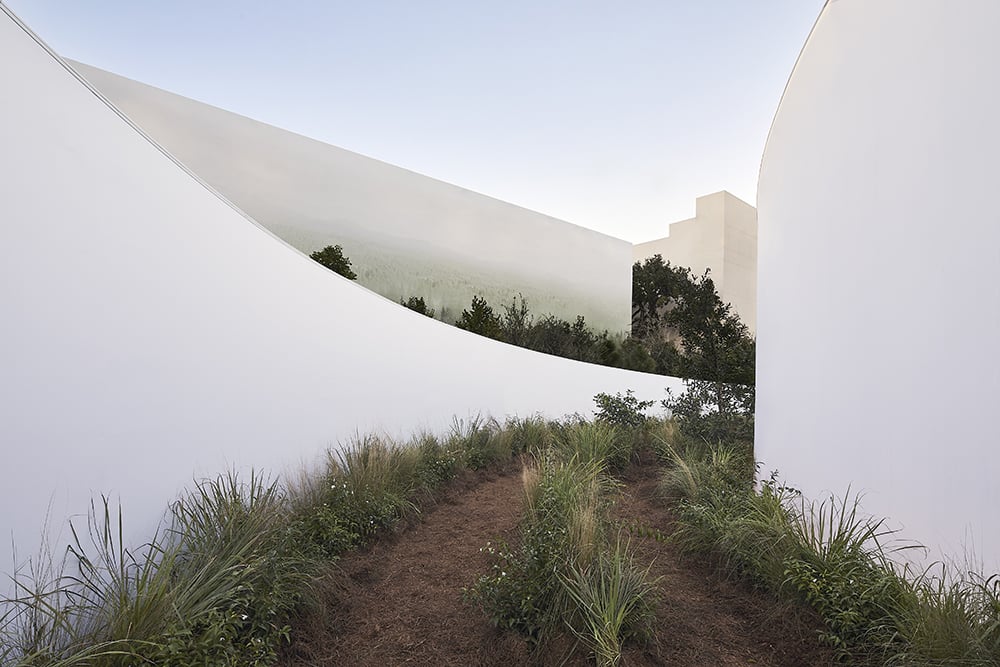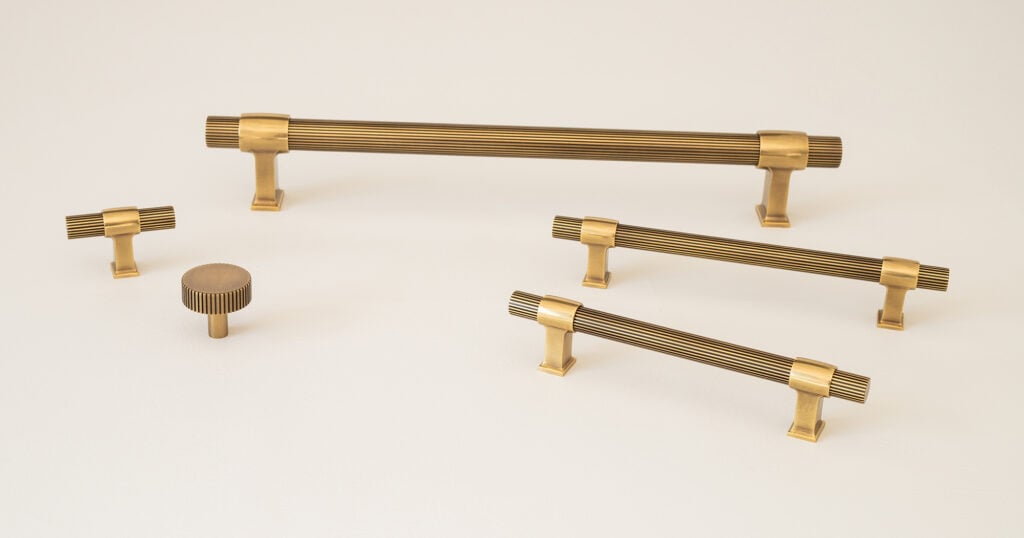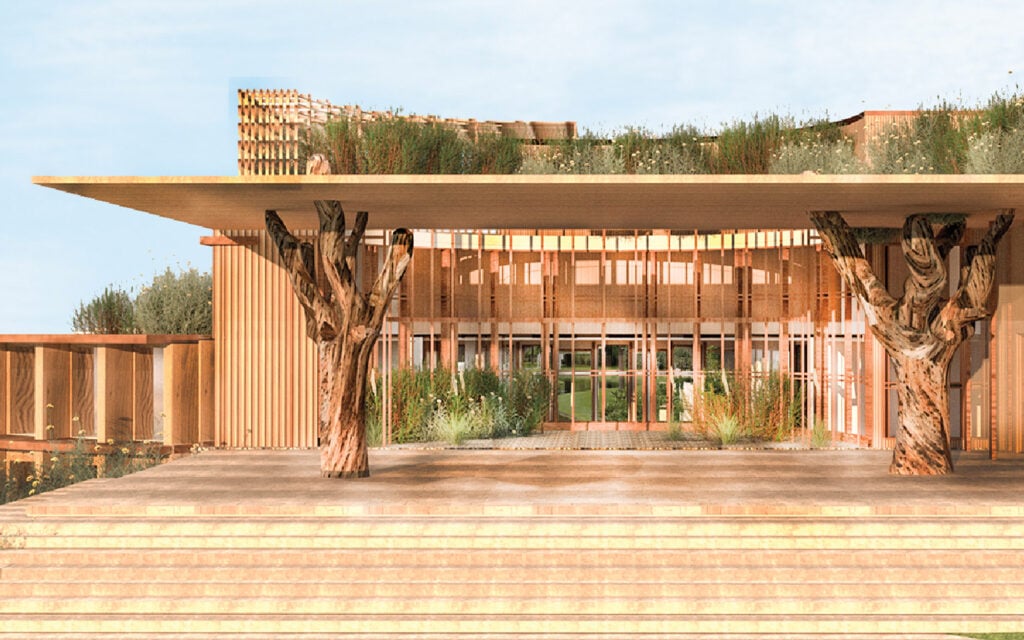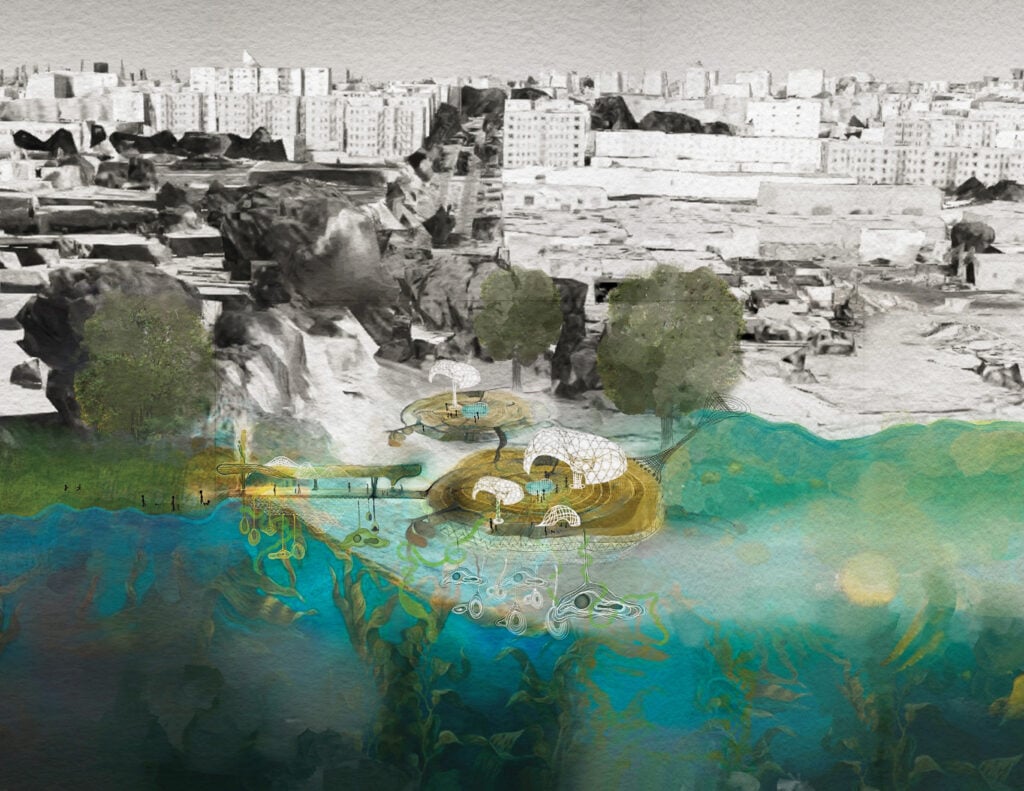
December 20, 2021
Playing Lost and Found in Es Devlin’s Ecological Labyrinth



Devlin, whose broad oeuvre includes stage sets for theater productions like the Lehman Trilogy, a revolving backdrop for Beyonce’s Formation world tour, and the new British Pavilion at Dubai Expo 2020, wants us to dial back our sensibilities to a pre-industrial age when people had a more symbiotic relationship with the natural world. In a video about Five Echoes, she says “the forest is a co-creator of the work,” and encourages visitors “to learn about [the trees], as you would a friend.”
The semi-circular installation—180 feet wide by 205 feet long—is not especially aesthetically striking, but it is relaxing and thought provoking, aside from the loud, somber, and muffled recorded voice of Devlin herself reciting the names of the plants. More information is available on white plaques that describe the attributes of the various flora and their contributions to the larger ecosystem. One, a jumble of green and brown stems called Fakahatchee Grass, serves as the main food source for the Byssus Skipper Butterfly. Another, the Southern Live Oak, can live for several hundred years and is resistant to Florida’s notorious hurricanes.

In the end, whatever quibbles I had with some of the hokey aspects, such as the sound tracks, I was inspired by the work and its ethos. “If we can start to see plants and animals as equal protagonists as ourselves in life,” Devlin writes, “I believe we have a better chance of making the fundamental behavioral shifts that are necessary not only to avoid climate chaos, but also to live in a more just, equitable, and joyful way.”
Latest
Products
Functional Beauty: Hardware That Does More Than Look Good
Discover new standout pieces that marry form and function, offering both visual appeal and everyday practicality.
Profiles
The Next Generation Is Designing With Nature in Mind
Three METROPOLIS Future100 creators are looking to the world around them for inspiration.
Profiles
Zoha Tasneem Centers Empathy and Ecology
The Parsons MFA interior design graduate has created an “amphibian interior” that responds to rising sea levels and their impacts on coastal communities.





